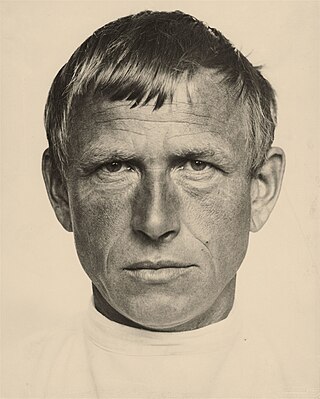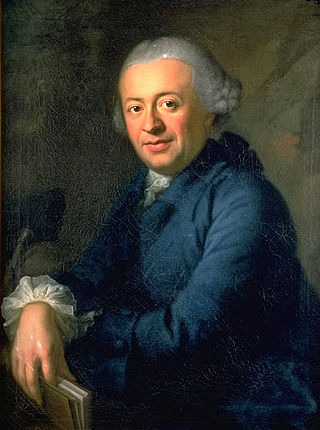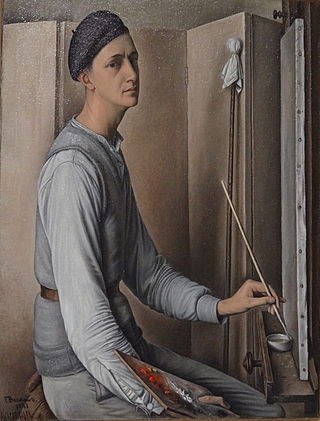

Alexandre Perrier (17 May 1862, Geneva - 5 May 1936, Geneva) was a Swiss landscape painter; mostly of Alpine mountain scenes. He also created a few portraits.


Alexandre Perrier (17 May 1862, Geneva - 5 May 1936, Geneva) was a Swiss landscape painter; mostly of Alpine mountain scenes. He also created a few portraits.
He came from a family of craftsmen and lost his father at the age of six. [1] After graduating from the Collège de Genève, he spent a short time working as a bank clerk, then moved to Mulhouse and trained as a textile printing designer. [2]
In 1891, he went to Paris, where he worked as a fashion illustrator and associated with a circle of Swiss creative artists, including Eugène Grasset and Édouard Rod. [2] He was also exposed to the latest styles in painting, such as Neoimpressionism, Symbolism and Art Nouveau and began painting himself, during summers spent in Geneva and Haute-Savoie. He also held several showings at the Salon des Indépendants. [1]
He exhibited at the Exposition Universelle (1900), winning a bronze medal, then returned to Geneva, where he received a federal scholarship. He would remain there for the rest of his life. In 1902, he exhibited with the Vienna Secession. In 1917, he was elected President of the Geneva section of the Gesellschaft Schweizerischer Maler und Bildhauer . [2]
His early paintings use a Pointillistic technique, but his later ones show a broader brushstroke. He did not follow the general practice of painting en plein aire, preferring to make sketches on site and producing the canvases in his studio. Many of his works are somewhat Chinese in character.
He died in an accident after leaving a showing of Modern Times by Charlie Chaplin. [1] Major retrospectives were held in 1937 at the Musée Rath and the Kunsthalle Bern.

Wilhelm Heinrich Otto Dix was a German painter and printmaker, noted for his ruthless and harshly realistic depictions of German society during the Weimar Republic and the brutality of war. Along with George Grosz and Max Beckmann, he is widely considered one of the most important artists of the Neue Sachlichkeit.

Paul Klee was a Swiss-born German artist. His highly individual style was influenced by movements in art that included expressionism, cubism, and surrealism. Klee was a natural draftsman who experimented with and eventually deeply explored color theory, writing about it extensively; his lectures Writings on Form and Design Theory, published in English as the Paul Klee Notebooks, are held to be as important for modern art as Leonardo da Vinci's A Treatise on Painting was for the Renaissance. He and his colleague, Russian painter Wassily Kandinsky, both taught at the Bauhaus school of art, design and architecture in Germany. His works reflect his dry humor and his sometimes childlike perspective, his personal moods and beliefs, and his musicality.

Salomon Gessner was a Swiss painter, graphic artist, government official, newspaper publisher, and poet, best known in the latter instance for his Idylls. He was a co-founder of the Helvetic Society and the first publisher and editor of the Neue Zürcher Zeitung.

Hans Erni was a Swiss graphic designer, painter, illustrator, engraver and sculptor.

Ferdinand Hodler was a Swiss painter. He is one of the best-known Swiss painters of the nineteenth century. His early works were portraits, landscapes, and genre paintings in a realistic style. Later, he adopted a personal form of symbolism which he called "parallelism".

Alice Bailly was a Swiss avant-garde painter, known for her interpretations on cubism, fauvism, futurism, her wool paintings, and her participation in the Dada movement. In 1906, Bailly had settled in Paris where she befriended Juan Gris, Francis Picabia, and Marie Laurencin, avant-garde modernist painters who influenced her works and her later life.

Alexandre Calame was a Swiss landscape painter, associated with the Düsseldorf School.
Michael Buthe was a German artist who lived and worked between Germany and Morocco. He exhibited widely throughout Europe during his life and is known for his eclectic and prolific oeuvre which encompasses painting, sculpture, and installation.
J. Maurice Reymond de Broutelles was a Swiss sculptor, painter, and engraver who worked in Paris, France.

François Barraud was a Swiss painter.
Stefan Haenni is a Swiss painter and a crime novel writer.
Alfred Heinrich Pellegrini was a Swiss painter, illustrator and printmaker. Along with Heinrich Altherr, Paul Bodmer and Walter Clénin, he was one of the most prolific Swiss muralists of the first half of the twentieth century.

Walter Kurt Wiemken was a Swiss painter.

Karl Aegerter was a prolific Swiss painter, draftsman, etcher, muralist, illustrator, designer and sculptor. Now in numerous private and public collections, Aegerter's works are often likened to those of Edvard Munch.

Hildebrand Gurlitt was a German art historian and art gallery director who dealt in Nazi-looted art as one of Hitler's and Goering's four authorized dealers for "degenerate art".

Wolfgang-Adam Töpffer, also Adam-Wolfgang or simply Adam Töpffer, was a Swiss painter who specialized in landscapes and watercolors. His son was the illustrator and cartoonist, Rodolphe Töpffer, who is sometimes called the "father of the comic book".
The following is a timeline of the history of the municipality of Bern, Switzerland.

Käthe Frida Rosa Loewenthal was a German Modernist landscape painter of Jewish ancestry. She was murdered in the Shoah. The Painter Susanne Ritscher was her sister.

Paul Eduard Crodel was a German landscape painter and a co-founder of the Munich Secession. He was sometimes known as "Schnee-und-Regen-Crodel".

Charles Joseph Auriol was a Swiss landscape painter.